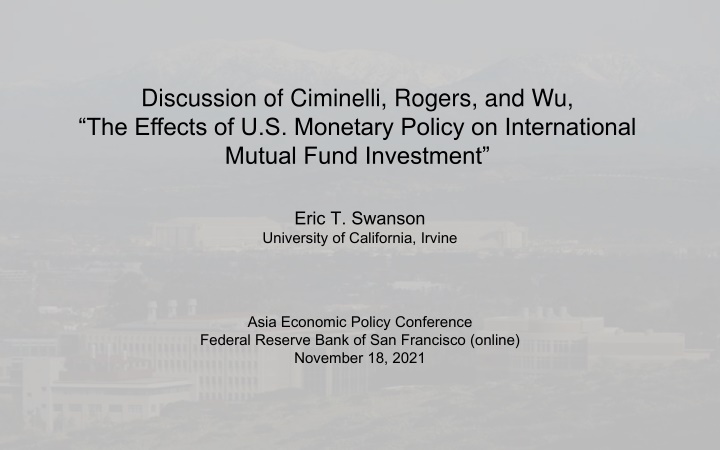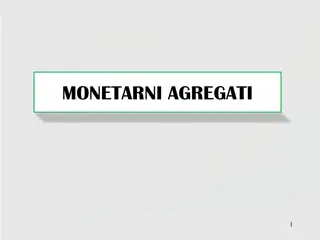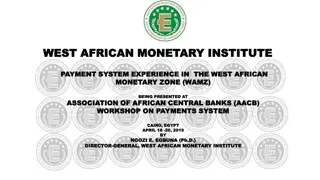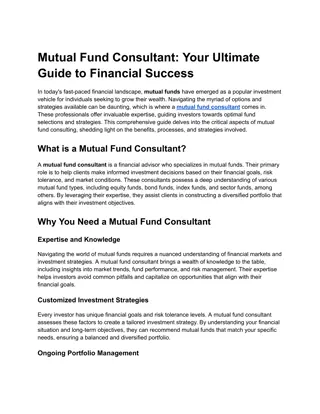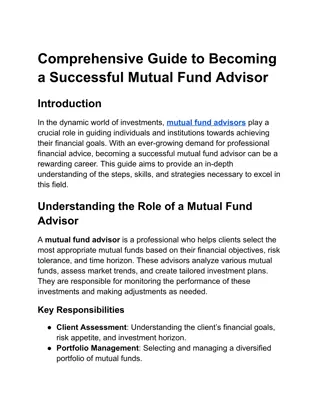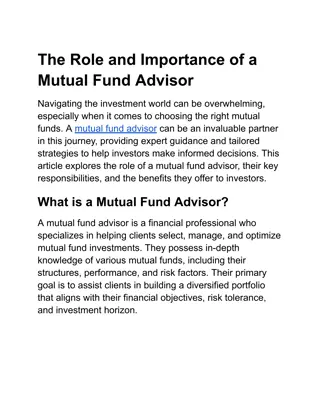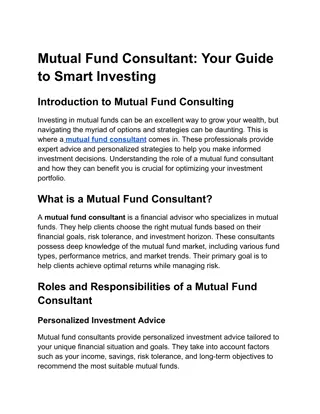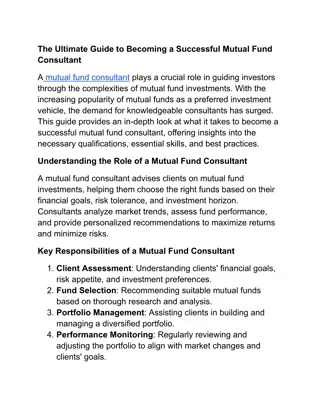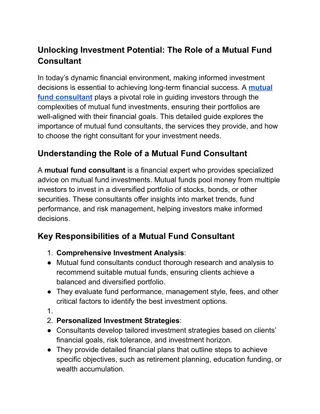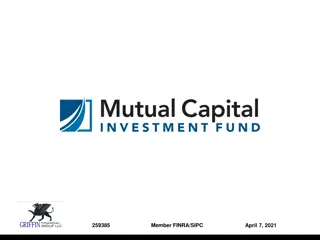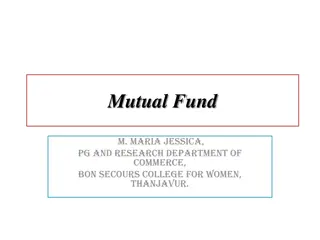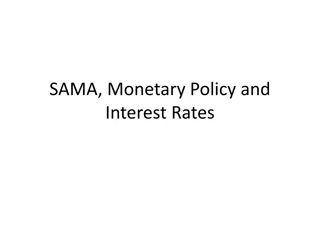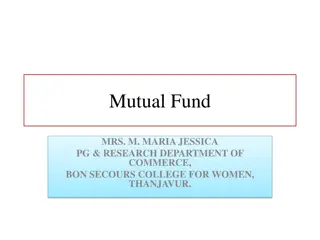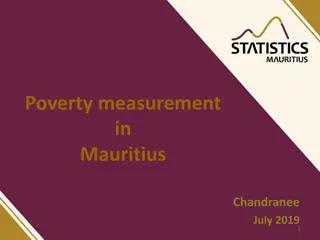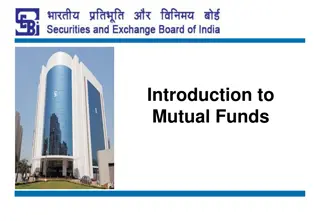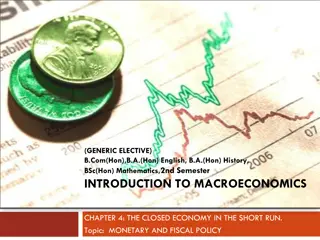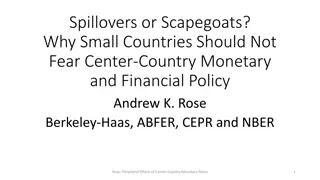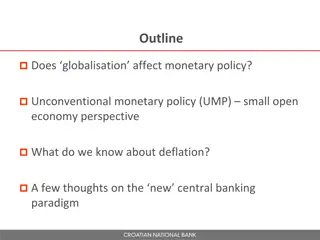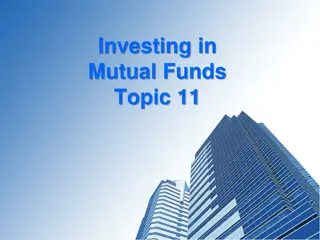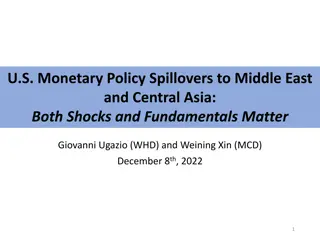The Effects of U.S. Monetary Policy on International Mutual Fund Investment
This paper discusses the impact of U.S. monetary policy shocks on international mutual fund flows, distinguishing between pure monetary policy shocks and information shocks. It examines how these shocks influence mutual fund investments and explores the differences in reactions to the Federal Reserve's forecasts compared to private sector forecasts. The study challenges the view that the Fed is a better forecaster than the private sector and sheds light on the role of publicly available economic news in shaping perceived information shocks.
Download Presentation

Please find below an Image/Link to download the presentation.
The content on the website is provided AS IS for your information and personal use only. It may not be sold, licensed, or shared on other websites without obtaining consent from the author.If you encounter any issues during the download, it is possible that the publisher has removed the file from their server.
You are allowed to download the files provided on this website for personal or commercial use, subject to the condition that they are used lawfully. All files are the property of their respective owners.
The content on the website is provided AS IS for your information and personal use only. It may not be sold, licensed, or shared on other websites without obtaining consent from the author.
E N D
Presentation Transcript
Discussion of Ciminelli, Rogers, and Wu, The Effects of U.S. Monetary Policy on International Mutual Fund Investment Eric T. Swanson University of California, Irvine Asia Economic Policy Conference Federal Reserve Bank of San Francisco (online) November 18, 2021
Overview Summary of Paper: 1) Decompose U.S. monetary policy announcements into pure monetary policy shock and information shock components 2) Estimate effects of each type of shock on mutual fund flows 3) Effects of pure monetary policy shock are consistent with conventional wisdom 4) Effects of information shock are novel
Effects of a Pure Monetary Policy Shock Are Fairly Standard Question: Where is the money going?
What Is an Information Shock? One view (adopted in this paper): Fed is a better forecaster than the private sector; when the Fed changes rates, it reveals Fed s economic forecast Bauer-Swanson (2021) present substantial evidence against that view: Show Fed s forecast is essentially identical to Blue Chip forecast Ask Blue Chip forecasters how they respond to Fed announcements: they do not revise forecasts in response to Fed s SEP forecast they deny existence of an information effect in general Show that information effect is explained by the Fed responding to macro & financial news by more than markets expected
What Is an Information Shock? Bauer-Swanson (2021): what looks like an information shock is really just the Fed responding to publicly available economic news: FOMC announcement Blue Chip survey Blue Chip survey economic news month t month t+1 Examples of economic news: Employment report, stock market returns (see also Schmeling-Schrimpf-Steffensen, 2021)
Ciminelli-Rogers-Wu Definition of an Information Shock Two-step definition: 1. Estimate typical response of each point on yield curve to FOMC announcements over whole sample 2. For each FOMC announcement, if 5-year yield responds unusually (relative to other yields), call that component an information shock This definition places a great deal of emphasis on the 5-year Treasury yield: Why do the authors call this an information shock ? Why not a forward guidance shock or an LSAP shock ? Other authors have used similar approaches but used a different asset to measure the information shock : Jarocinski-Karadi (2020 AEJMacro): stock market Andrade-Ferroni (2021 JME): inflation swaps
Ciminelli-Rogers-Wu Definition of an Information Shock Jarocinski-Karadi: Some large examples of CRW information shocks : 17.3 bp October 2008: information shock is +10.9 bp +0.1 bp January 2009: information shock is +20.2 bp +7.8 bp March 2009: information shock is 19.3 bp These examples don t look much like information shocks March 2009 in particular seems like a good example of an LSAP shock Bottom line: I have some concerns whether the authors method is the best definition of an information shock How would authors results change if they used the Jarocinski-Karadi definition instead?
Effects of an Information Shock in the Paper I view these as effects of macro- financial news shocks and/or LSAP shocks
Summary Summary of Paper: 1) Decompose U.S. monetary policy announcements into pure monetary policy shock and information shock components 2) Estimate effects of each type of shock on mutual fund flows 3) Effects of pure monetary policy shock are consistent with conventional wisdom 4) Effects of information shock are novel Summary of My Comments: 1) Information shocks are better thought of as Fed response to news shocks in general 2) I have some concerns whether authors focus on 5-year Treasury yield is the best definition of an information shock 3) How do the authors results change if they use Jarocinski-Karadi definition instead?
